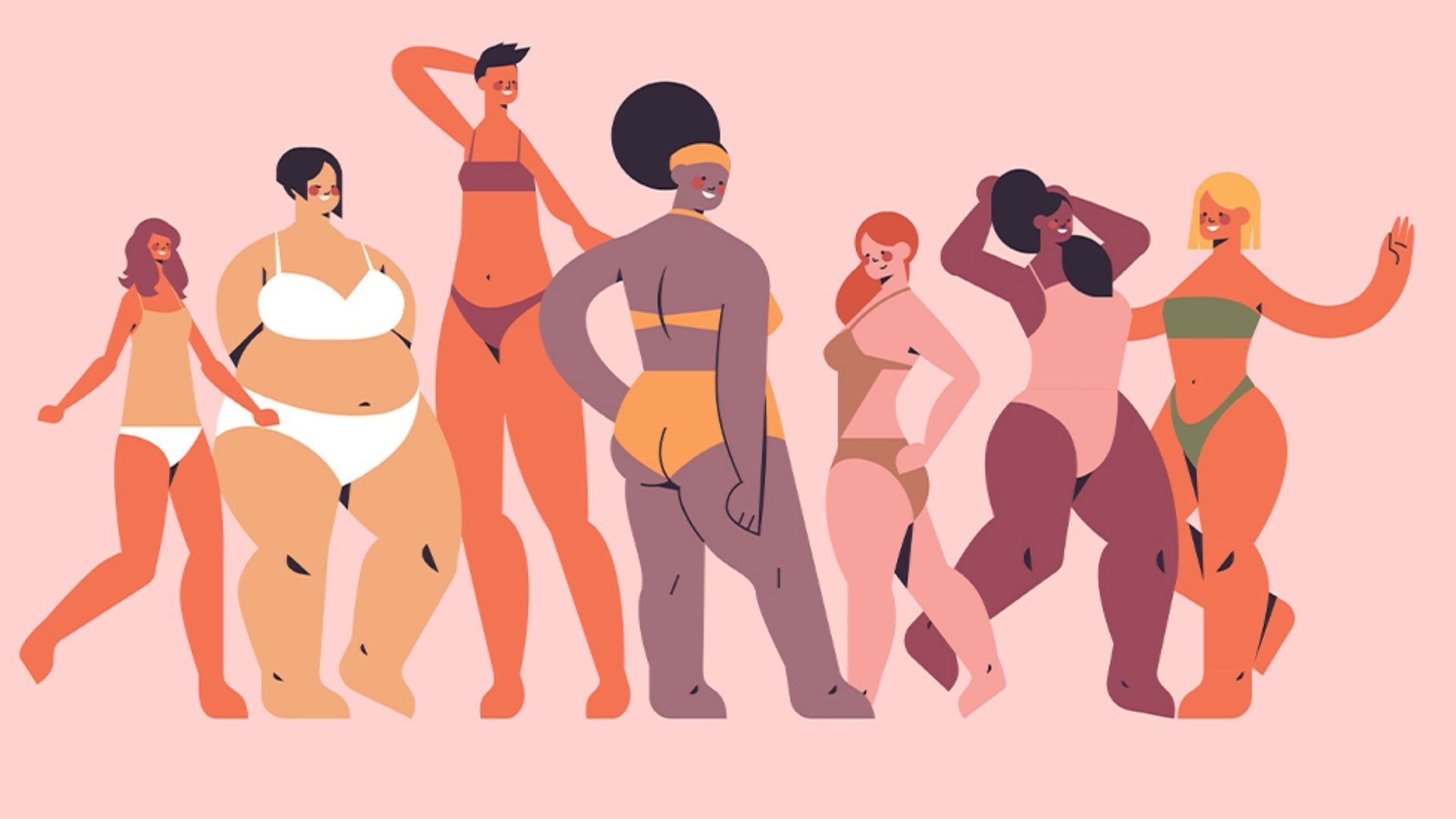Growing up, Ms Shiying Seow struggled with body dysmorphia. She attributes it mainly to her background in ballet.
“I always felt like I had to look skinny [to be a good dancer], and that eventually manifested itself into eating disorders,” she says. “So for the most part of my formative years, I had a very unhealthy relationship with my body image in my mind’s eye.”
She would be far from being the only one. A group of women who are tired of tying their sense of self-worth tightly to the way they look have formed a body positivity army.
In case you haven’t heard: body positivity is the social movement focused on the acceptance of all body types, regardless of size, shape, skin tone, gender, or physical ability — an ambitious feat in the face of all the fatphobic pressures from the media, beauty industry, and even loved ones.
Makeup artist and coach Mary Victor says the movement is often wrongly conflated with promoting obesity.
“People see that many fat women are advocating for the movement, and they think that body positivity promotes obesity — when in fact, all it stands for is loving your body, no matter what size or shape you are,” she says. In other words, a woman can keep working on herself while embracing how she presently looks.
Self-acceptance and the desire to become better are not mutually exclusive concepts, and treating them as such may even result in a grave self-fulfilling prophecy.
“The main issue that fat people face when they work out is that they have very low self-confidence because of what they’ve been told their whole lives,” says fitness and wellness coach Clara Nah. “It turns into very negative self-talk, and some of them potentially give up on their fitness journeys.”
Ms Mary concurs from personal experience that fat women who work out and have personal trainers still get body-shamed. “When I don’t work out, people say I don’t exercise enough. But when I do, I get remarks from people — weirdly enough, they are family,” she says.
What might come as a surprise is that the healthcare industry, too, is not exempted from weight stigma. This might stem from the fact that doctors, being human too, similarly subscribe to the same longstanding paradigm of medical knowledge: that skinny equals healthy.
“Using Body Mass Index (BMI) to measure one’s health is actually kind of controversial these days,” says Ms Nah, who is a certified trainer and nutrition coach. “It’s quite outdated because it mainly relies on your height and weight, but weight is not the only indicator of your body composition. Athletes, for example, are classified as technically overweight or even obese because they have more muscle mass.”
Contrary to popular belief, a fat person is not automatically more unfit than the average or skinny person. Research has shown that while health conditions like diabetes and heart disease are correlated with weight, they are not the cause. In fact, weighing more can even protect against other health conditions such as osteoporosis, and even some kinds of cancer.
A better indicator of health is lifestyle habits. In a 2012 study of almost 12,000 adults, people had longer life expectancies when they abstained from smoking, drank less alcohol, exercised and ate fruits and vegetables regularly — regardless of their BMIs.
The consequences of this medical weight stigma, once again, can be dire. In a 2014 study, researchers found that 21 per cent of patients classified with “overweight” and “obese” BMIs felt that their doctor “judged them about their weight”. This resulted in patients being less trusting of their doctors, and less likely to return for follow-up care.
And they might not be wrong about distrusting their doctors. Ms Mary, for example, is diagnosed with Polycystic Ovarian Syndrome (PCOS), which causes her to be overweight, and have excessive hair loss. Her condition causes her to have hormonal and fertility issues, but have nothing to do with her weight.
“Since I can remember, I have always been fat. There was never a skinny point in my life, and even if there was, it would be because of an eating disorder. Having been misdiagnosed many times before and given prescribed diets caused me to have so much malnourishment, moodiness, and to look at food in the most unhealthy ways,” says Ms Mary, who eats mostly plant-based foods and barely touches fast foods like Macdonald’s.
“It’s quite crazy to think that are so many other women who have been misdiagnosed because of how they look, without doctors actually looking at their underlying health conditions, genetic health, hormonal issues, and sexual reproductive health,” she adds.
Health at Every Size (HAES) and Body Neutrality
Going by a weight-centric model, most doctors today use it as the main benchmark for health, and would prescribe a diet or weight loss as the main antidote to bad health.
As opposed to this, the Health at Every Size (HAES) movement, originated in America, encourages health practitioners to look at other biomarkers such as blood pressure and cholesterol levels, instead of looking to the weighing scale by default.
A HAES practitioner would also be concerned with other socioeconomic or environmental factors that might affect one’s access to a healthy lifestyle. These could be your income level, whether the neighbourhood you live in has healthy takeout options, or whether you have time to cook at home.
On a personal level, some are leaning towards a newer sub-movement instead: body neutrality.
“There was a time that I tried to be body-positive, but I realise how tiring it was for me to constantly have to celebrate my body, even when I wasn’t feeling positive about it,” says Ms Seow, who speaks openly about her body acceptance journey on her Instagram platform, @shingwithme.
Body positivity means acknowledging the reality that one is not going to love your body at all times. Rather, it is looking in the mirror, reminding yourself that your body is not tied to your self-worth, and choosing to respect it nonetheless, Ms Nah explains.
“I acknowledge that I do care about how I look and that I’m quite health-conscious, so there is a limit to how much I can celebrate when I do not feel in this body that I am in at times — and it makes me want to do something about it,” adds Ms Seow.
What of diet culture?
When it comes to diet culture, the health and fitness scene is split between two extremes, according to Ms Nah. There are people who are very strict and have a “no days off” mentality, and there are people who are anti-diet and think any form of weight loss is bad.
But she advocates for a middle ground. “You have autonomy. You can choose what you want to do with your body, but I just want you to do it in a healthy, sustainable way that’s fun for you,” she says.
As opposed to the scarcity mindset — looking in the mirror, feeling bad about oneself, and then chasing weight-loss to feel good enough — she believes enjoying the inherent process of working out to be “the missing piece of the puzzle”.
“You feel like you have autonomy and you’re doing it for yourself and you’re more likely to stick to it,” she adds.
Conclusion: Balance is key
Over the years, Ms Seow has begun incorporating other factors into her self-assessment routines. These include asking herself questions like “Am I feeling strong?”, “Am I getting enough exercise?”, “Is my diet balanced?” “Have I been dieting too much, or eating too clean?”
When asked what “too clean” means to her, she explains that it is recognising her own extremist tendencies that might reopen her path to an eating disorder. “I might start counting my calories a lot or weighing myself every day — that’s when I know I require an active intervention,” she says.
These days, instead of logging her calories, she logs down how she feels about her body, and the very practical reasons why she might be feeling that way — ranging from period bloating to having a heavy meal the night before. She continues to get on a weighing scale, but grants herself a little more self-compassion by abstaining from it when she knows she has had tough days.
“I like to see my body as a canvas. Sometimes I’m going to work a bit harder and it’s going to lose weight, and other times we’re going to let go because we’re stressed and it’s going to expand. A lot of things are going to happen to it, and it’s going to keep changing,” she says.
Join the conversations on TheHomeGround Asia’s Facebook and Instagram, and get the latest updates via Telegram.





























